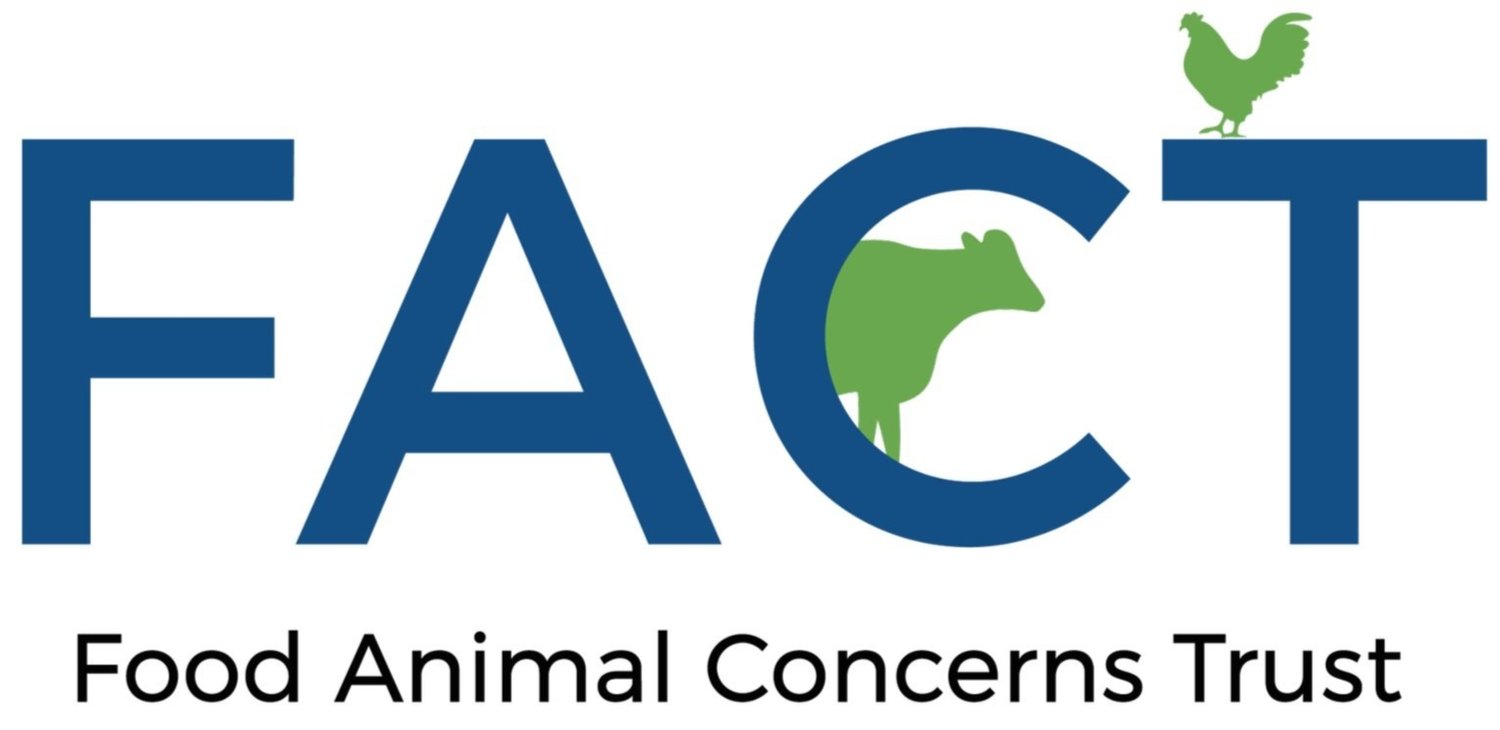Winter on a Humane Farm
Lydia Strand, FACT Humane Farming Program Assistant, Bellingham, WA
Guernsey cows Maisy, Marigold, and Minnie in the snow taken by Lydia’s husband, Jared.
Winter is a time of rest, reflection, and preparation on our farm. The pace of day-to-day work is slower and less demanding, providing space to catch up on neglected projects after a year packed with daily work from early morning thru late evening. We’re also making plans for the upcoming year, always streamlining and sussing out what works best on the farm and what to let go. The life of the farmer is not for the faint of heart, soul, or spirit.
Ewe lambs and guardian dogs taking a break in the barn. Lando is the dog in the foreground.
Like other areas of the US, this winter has been a wild weather ride in the Pacific Northwest. Starting with mild temperatures and plenty of rain to 2-degree mornings (the coldest our county has been in 70 years) and nearly a foot of snow in mid-January. Just this past weekend we had record-breaking temperatures in the 60s. It’s so unreal to walk outside at the end of January with a chorus of frogs croaking in a balmy, spring-like breeze.
With all the moisture, most of the sheep are tucked into the barn to keep them off wet pastures. protecting their health and allowing grazing areas to rest. Our Guernsey cows are enjoying the last of the 2023 forage in their winter pastures. I can tell they are ready for less hay and more lush grazing. The livestock made the most of the cold weather and snow but I felt very unprepared for such drastic meteorological changes so quickly. Such is the way of the world now.
Looking forward to the real spring, we wrapped up sheep breeding in late December. Our Icelandic ewes were scanned for pregnancy on that very cold weekend in January. Only one ewe scanned for a single lamb, the rest were twins or more. We’re looking forward to about 70 lambs beginning in early April with new and aspiring shepherds joining us for a weekend to learn and prepare for future lambing seasons with their own sheep flocks.
I hope this crop of lambs, and future calves, will benefit tremendously from last fall’s no-till drill pasture seeding, once things dry off and the sun returns. Flock growth is contingent on continued pasture improvement and management. Every year we work to do better and be better at this thing that is impossible to perfect.
May it be our greatest, most successful lambing and grazing season yet!


